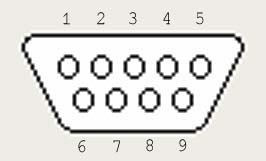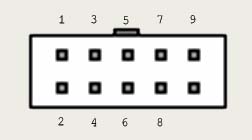|
At this point, I would have had enough information to identify the
correct cable if I had been paying attention, but it looked to me as
if neither of the cables matched what I was seeing, so I started
jumping various pins to the DTR line, then using the show
comm command in Kermit 95 to monitor
which signals were now on. This quickly identified CD, DSR, CTS, and
RI, leaving only signal ground and receive to distinguish between.
Switching to terminal emulation mode with no local echo, and
jumpering the transmit pin to each of the remaining candidates, I was
easily able to determine which pin was receive by observing
characters echo when I type. That left only one pin, which must be
signal ground since all others were identified.
|

